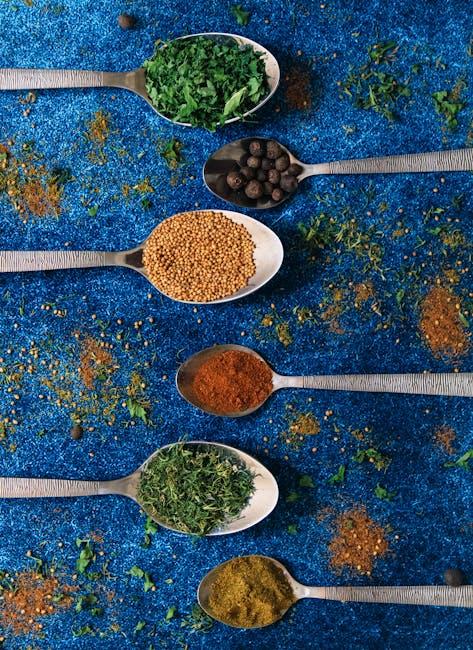Table of Contents
- Understanding the Essentials of a Kombucha Starter Kit
- Choosing the Right Ingredients for Brewing Success
- Step-by-Step Guide to Your First Kombucha Batch
- Maintaining Your Brew: Tips for Optimal Fermentation
- Troubleshooting Common Kombucha Issues for New Brewers
- Q&A
- The Way Forward
Understanding the Essentials of a Kombucha Starter Kit
When venturing into the world of kombucha, having the right starter kit is pivotal to ensure a successful brewing process. A typical kombucha starter kit includes various essentials that enable both novice and experienced brewers to craft this effervescent beverage at home. The primary components typically found in a starter kit include:
- SCOBY (Symbiotic Culture of Bacteria and Yeast): This is the heart of the kombucha brewing process, responsible for fermentation.
- Kombucha Starter Tea: Often included to jumpstart the fermentation, this pre-brewed tea contains the necessary bacteria and yeast.
- Tea Bags: Usually black or green tea is recommended to provide the flavor and nutrients needed for fermentation.
- Sugar: An essential ingredient that feeds the SCOBY during fermentation.
- Fermentation Jar: Often glass, this container allows you to monitor and facilitate the growth of kombucha.
- Tea Towels or Covers: To protect the brew while allowing it to breathe.
In addition to the primary ingredients, many kombucha starter kits come with useful tools to streamline the brewing experience. Items such as pH strips for monitoring acidity, bottling supplies for storing the finished product, and measuring spoons for precision contribute to a more successful fermentation process. Some kits may also include detailed instructions, making it easier for beginners to familiarize themselves with the steps involved in crafting this fizzy delight.
Choosing the right kit can make all the difference, especially considering the quality of the ingredients. A good starter kit should prioritize high-quality, organic components that support the health of your SCOBY and improve the flavor profile of your brew. When selecting a kit, it’s beneficial to look for those with positive reviews, as this can indicate reliability and user-friendliness in the brewing process. With proper attention to each component, anyone can embark on their kombucha-making journey with confidence and creativity.


Choosing the Right Ingredients for Brewing Success
When embarking on your kombucha brewing journey, the choice of ingredients plays a pivotal role in shaping your final product. The foundation of any great brew begins with high-quality tea. Black, green, and even herbal teas can provide unique flavors and benefits. Opt for organic varieties whenever possible to avoid pesticides that may interfere with the fermentation process. Remember, the tea should be free of any additives or flavorings to ensure the fermentation occurs properly.
Equally important is the selection of sugar. The right sugar serves as fuel for the SCOBY (Symbiotic Culture of Bacteria and Yeast), enabling it to ferment the tea into that tangy, effervescent beverage you crave. Choose between regular table sugar, raw cane sugar, or even alternatives like honey or coconut sugar. While they each impart different characteristics to your brew, make sure to avoid using artificial sweeteners, as they can hinder fermentation.
Lastly, don’t underestimate the impact of quality starter tea, which helps welcome beneficial bacteria into your brew. This is usually a portion of previously fermented kombucha or store-bought probiotic kombucha. Using about a cup of starter tea per batch not only jumpstarts the fermentation process but also helps to acidify the brew initially, creating an environment that is less hospitable to harmful microorganisms. Below is a simple comparison of ingredients for easy reference:
| Ingredient | Type | Notes |
|---|---|---|
| Tea | Black, Green, Herbal | Organic recommended, no additives |
| Sugar | Table, Raw Cane, Honey | Avoid artificial sweeteners |
| Starter Tea | Previously brewed kombucha | Enhances fermentation, adds acidity |


Step-by-Step Guide to Your First Kombucha Batch
Embarking on your first kombucha brewing journey can be exciting and a little daunting. To begin, gather your ingredients and equipment from your kombucha starter kit. Ensure you have the following essentials ready:
- Tea: Choose between black, green, or herbal teas.
- Sugar: Regular white sugar is the most common choice.
- SCOBY: This Symbiotic Culture Of Bacteria and Yeast is the heart of kombucha brewing.
- Starter Tea: A few cups of pre-brewed kombucha helps kickstart the fermentation process.
- Filtered Water: Avoid chlorinated water, as it can affect fermentation.
- Glass Jar: A large glass fermentation jar is essential.
Next, prepare your kombucha base. Start by boiling a quart of water, then remove it from heat. Stir in your chosen tea and add around one cup of sugar, ensuring it dissolves completely. Once cooled, combine this mixture with an additional three quarts of filtered water and the starter tea in your fermentation jar. It’s important to let this mixture cool to room temperature before introducing the SCOBY; otherwise, the heat may harm the culture.
After the SCOBY is added, cover the jar with a breathable fabric or coffee filter secured with a rubber band. This allows airflow while keeping out dust and insects. Place the jar in a warm, dark place, ideally between 68°F and 85°F (20°C to 29°C), for about 7 to 14 days. The exact brewing time may vary based on your taste preference; a shorter fermentation results in a sweeter drink, while longer fermentation leads to a tangier flavor. Check-in periodically, and once it has reached your desired taste, your homemade kombucha is ready for bottling!


Maintaining Your Brew: Tips for Optimal Fermentation
Successful fermentation requires an understanding of the balance between temperature, time, and ingredients. Begin by ensuring your brewing environment is warm but not too hot—ideally between 68°F and 85°F (20°C to 29°C). A stable temperature promotes the activity of the SCOBY (Symbiotic Culture of Bacteria and Yeast), leading to a successful ferment. Use a thermometer to monitor the conditions regularly; sudden fluctuations can stress the culture, resulting in off-flavors.
Regularly check the pH of your kombucha to ensure it’s within the optimal range of 2.5 to 3.5. Maintaining this acidity not only prevents harmful bacteria from taking hold but also enhances the final flavor profile. You can easily test the pH using pH strips or a digital meter. If it starts getting too high, consider a shorter fermentation time or introducing a small amount of vinegar to the mix to help lower it.
be mindful of your ingredients. Using high-quality tea and sugar is crucial. Here’s a quick guide to types of tea and their effects:
| Type of Tea | Flavor Profile | Fermentation Impact |
|---|---|---|
| Black Tea | Bold and rich | Full-bodied flavor and stronger fermentation |
| Green Tea | Light and grassy | More delicate flavor and quicker fermentation |
| Herbal Tea | Varies widely | Unique flavors but may affect fermentation |
By paying attention to these aspects, you’ll ensure a healthier brew with each batch, allowing you to enjoy delicious home-made kombucha time and time again.


Troubleshooting Common Kombucha Issues for New Brewers
As a new kombucha brewer, you might encounter various hurdles that can impact the quality of your brew. One common issue is a vinegary taste. This flavor typically arises when kombucha is fermented for too long or when the temperature is too warm. It’s essential to monitor your fermentation period closely, usually around 7 to 14 days, and ensure that the environment remains between 68°F and 85°F. If your brew turns out too vinegar-forward, consider using it for salad dressings or marinades rather than discarding it entirely.
Another frequent concern is the formation of mold on the surface of the SCOBY. If you notice any fuzzy blue or green spots, your batch has been compromised. Mold often develops due to improper cleanliness or exposure to contaminants. To prevent this, always use sanitized equipment, and make sure to brew in a clean environment. If mold appears, it’s best to throw out the entire batch and start fresh with a new SCOBY from a reputable source.
many brewers worry about carbonation levels. If your kombucha is flat, you may not have used enough sugar during the second fermentation process. Adequate sugar is crucial for the yeast to create carbonation. Experimenting with various types of sugars, such as fruit purees or even flavored syrups, can enhance the fizz. Remember to bottle your kombucha in airtight bottles to ensure that carbonation builds up effectively over time.
Q&A
Q&A: Everything You Need to Know About Kombucha Starter Kits
Q1: What is a kombucha starter kit? A: A kombucha starter kit is a collection of essential supplies needed to brew your own kombucha at home. Typically, it includes a SCOBY (Symbiotic Culture of Bacteria and Yeast), starter tea, sugar, tea bags (usually black or green), and sometimes even a brewing jar and a few other accessories like pH strips or bottles for storage.Q2: Why should I consider brewing my own kombucha? A: Brewing your own kombucha can be a rewarding experience. It allows you to customize flavors, control the fermentation process, and ultimately save money compared to buying store-bought versions. Plus, you’ll gain a deeper understanding of the fermentation process and the health benefits associated with kombucha.
Q3: How difficult is it to use a kombucha starter kit? A: Using a kombucha starter kit is quite straightforward! Most kits come with clear instructions, making it accessible for both beginners and more experienced brewers. The process involves brewing tea, adding sugar, introducing the SCOBY, and letting it ferment over a couple of weeks. With a little patience and care, you’ll be sipping your homemade kombucha in no time!
Q4: How long does it take to brew kombucha using a starter kit? A: Typically, the fermentation process takes about 7 to 14 days. The exact time depends on factors like room temperature, taste preferences, and the specific recipe you follow. The longer you allow it to ferment, the more tart and complex the flavor becomes.
Q5: Do I need any special equipment to brew kombucha? A: While you don’t need highly specialized equipment, a few basic tools make the process easier. Most starter kits include a fermentation jar, but having some additional items like measuring cups, a stirring spoon, and bottles for storage can be helpful. It’s also important to keep your brewing area clean to maintain a healthy SCOBY.
Q6: What are the health benefits of kombucha? A: Kombucha is often celebrated for its potential health benefits, which may include improved digestion, boosted immunity, and increased energy due to its probiotic content. However, everyone’s body reacts differently, so it’s wise to monitor how you feel and consult a health professional if you have concerns.
Q7: How can I customize my kombucha once I’ve mastered the basics? A: Customization is one of the most enjoyable aspects of brewing kombucha! After the initial fermentation, you can flavor your brew by adding fruits, herbs, or spices before a secondary fermentation. Experimenting with different combinations, like ginger lemon or hibiscus, can lead to delightful surprises.
Q8: How do I store my kombucha? A: Once your kombucha is brewed, it’s best to store it in airtight bottles in the refrigerator. This slows down the fermentation process, allowing you to enjoy it over time without it becoming overly sour. Just make sure to leave some headspace in the bottles to accommodate any carbonation.
Q9: What should I do if my kombucha doesn’t turn out as expected? A: If your kombucha doesn’t turn out quite right, don’t get discouraged! A sour taste may be due to over-fermentation, while a flat brew could indicate insufficient fermentation time. Check your brewing conditions and hygiene practices to ensure everything is optimal. If needed, you can always start fresh with a new SCOBY.
Q10: Where can I purchase a kombucha starter kit? A: Kombucha starter kits can be found at local health food stores, online retailers, and specialty brewing shops. When choosing a kit, look for one that includes quality ingredients and comes with comprehensive instructions to guarantee a successful brewing experience. — With this Q&A, we hope to have answered your pressing questions about kombucha starter kits, paving the way for a successful brewing journey! Enjoy the process of creating your delicious homemade kombucha.
